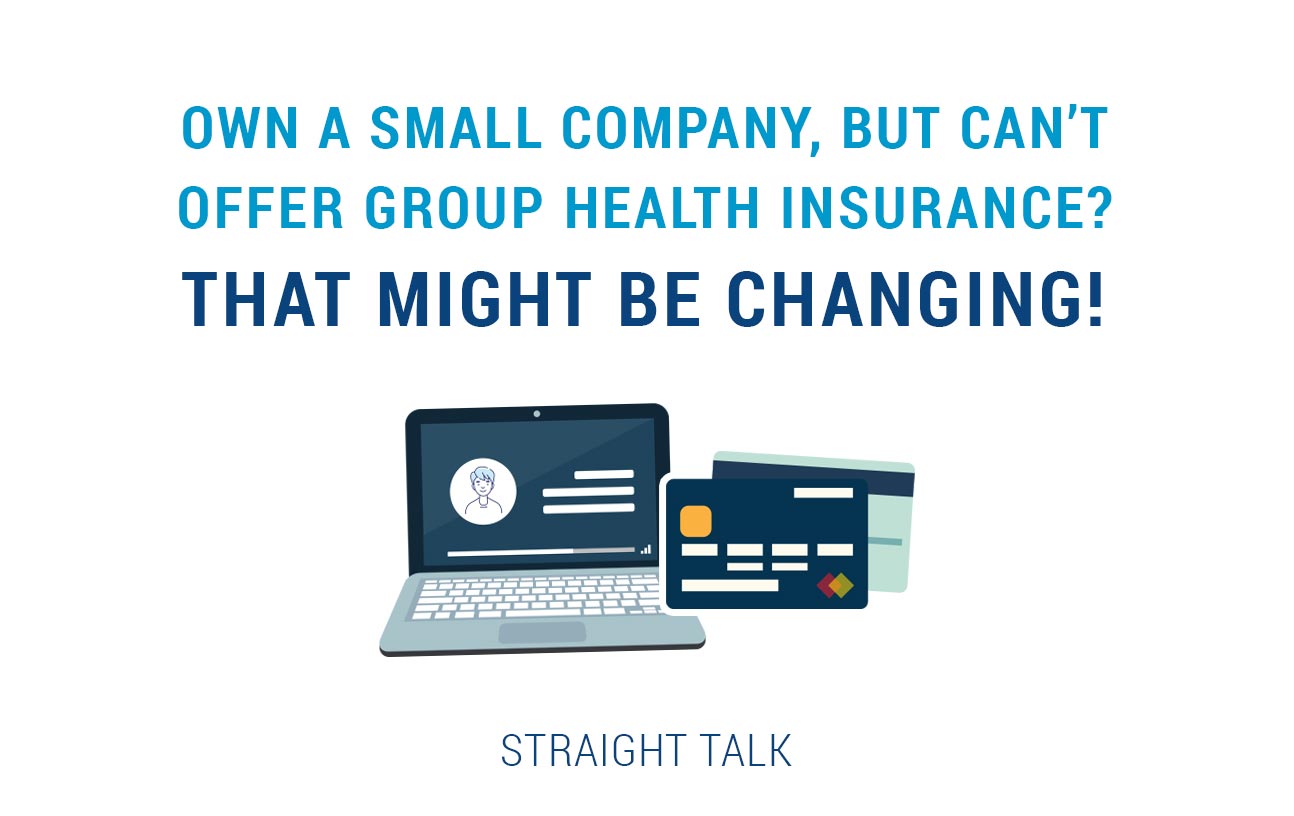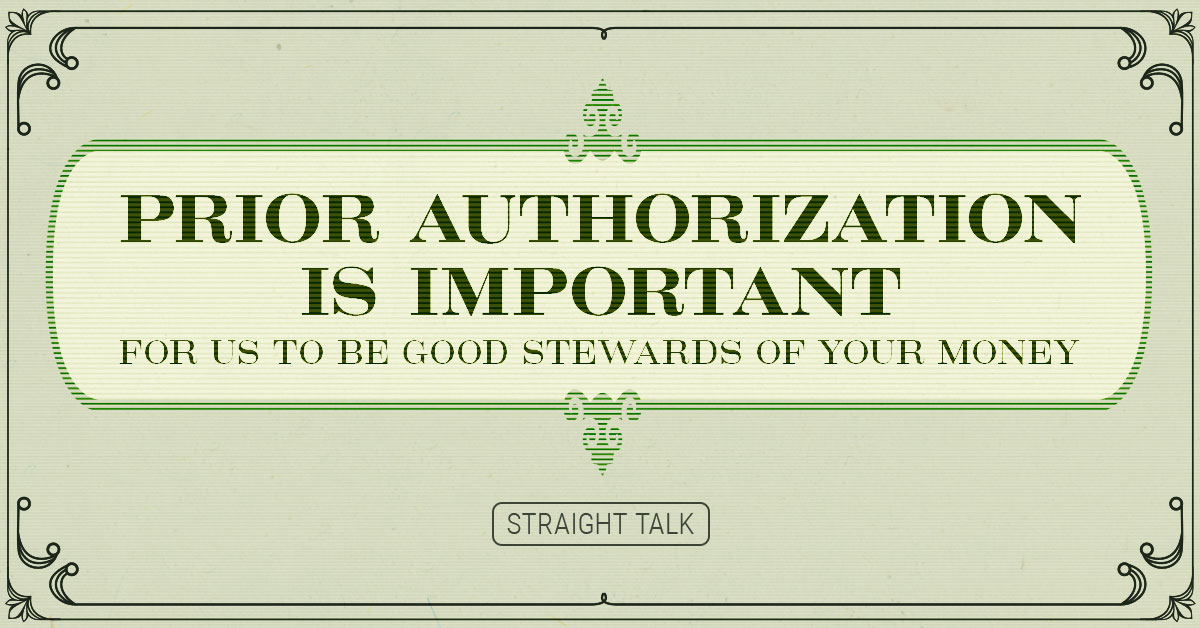A new rule about HRAs could change how small employers fund health insurance
The numbers in Louisiana are frankly not too good: only 20% of employers with fewer than 10 employees offer their employees a group health plan.
And only 35% of employers with fewer than 20 employees offer group health coverage. Clearly, people working for a small employer are most likely getting covered through the individual health insurance market or Medicaid.
Well Mike, is that a problem? I mean, the Affordable Care Act and healthcare.gov were created to deal with this, right?
Yes, they were. But these solutions have flaws, and often, moderately successful folks who work for smaller companies get punished for it. We’ll explain how it works now and what could change to help you and your employees.
How It Works Now
If you own a company that offers a group health plan, two important things happen in your and your employees’ favors under the IRS Tax Code:
- As the employer, you get to claim the expenses for your employees’ health plan as a business expense, making you more likely to offer a plan; and
- Your employees get to pay their share of the premiums with pre-tax dollars, boosting their financial power by whatever their highest income tax rate (marginal rate) is.
Neither of these things apply if you don’t offer your employees a group health plan and your employees buy an individual policy, like a policy on healthcare.gov. Sure, they might qualify for a Premium Tax Credit if their income is low enough, but as their employer, you have historically not been allowed to contribute to their individual coverage like you can with a group policy. And employees can’t pay their share of the premiums with pre-tax dollars, like they can with a group policy.
So, Mike, why can’t my company just offer me a Group Health Plan?
For a smaller employer without the resources of a larger company, funding group health insurance can be quite a challenge. To create a legitimate risk pool inside of an employee group, lots of people have to participate in the plan, typically at least 75% of all eligible employees. To get that many employees to participate, you might have to fund 80%, 90% or even 100% of their premiums. This kind of expense could be a financial challenge.
Adding to that challenge, the lowest-income employees often qualify for amazingly low premiums on healthcare.gov, or they get free coverage from the state’s Medicaid program, so they don’t want the group health plan. But if you offer them group coverage, they LOSE the ABILITY to get those lucrative tax credits on healthcare.gov, leaving them with the group health plan that might be more expensive! That’s the “flawed solution” from the ACA I was referring to.
It’s so confusing! But we might see some light at the end of this small-company tunnel.
A New Kind of Health Reimbursement Arrangement
Enter one more option into the mix: the new Health Reimbursement Arrangement (HRA). Imagine this scenario:
An employer with 10 full-time employees puts a fixed amount of money into a funding account for each employee, which can ONLY be used for medical expenses. Then, the employees get debit cards that draw into that fund IF the money is used to pay premiums/deductibles/copays for individual coverage. The employer gets to claim the withdrawal as a legitimate business expense on taxes, AND if employees buy individual policies (outside the healthcare.gov exchange), they can have their premium balance withheld from their paychecks PRE-TAX. Sort of mimics the tax benefits of a group health plan, without all the restrictions and expenses.
Benefits to You as the Employer
From your perspective as the employer, there are a lot of benefits in this scenario:
- You can scale your contribution to something you can actually afford, without having to worry about participation percentages. Thus, your lowest-income employees can enroll in Medicaid without disrupting your health plan.
- Your employees don’t HAVE to use the money, so you’re only subsidizing the people who actually want coverage.
- You can deduct this HRA contribution on your taxes.
To make it more interesting, instead of offering your employees one or two choices in a group health plan, your employees can buy any bona fide individual policy sold in their state, typically at least 30 options or more, with their HRA withdrawals. And as the employer, you can choose whether to roll over any unused funds to the following year.
Truthfully, HRAs have been around a long time, but this new interpretation of how a company can use them was just released simultaneously in June 2019 as a final regulation from the IRS, Centers for Medicare & Medicaid Services (CMS) and the Department of Labor. It kicks in officially Jan. 1, 2020, but I suspect we are going to hear a lot about these “new” HRAs as small companies realize it offers a brand new solution to some very old problems.
In addition, the “new” HRAs may help stabilize the individual market by bringing in more healthy people who can buy there and still get preferred income tax status. Overall, I think this new rule has the potential to be a win-win for folks who are currently uninsured, as well as for health insurers trying to keep coverage affordable
Stay tuned for more as it develops. The rule was only 497 pages long, after all, so more Straight Talk on HRAs to follow!





10 or more employees or just 10 only or under 10
Bryan!
This is an excellent question. The regulations on Health Reimbursement Arrangements (HRA’s) do not specify that an employer needs to be a certain size to take advantage of the rule, as long as he has 1 legitimate employee. For the purposes of this rule, the HRA IS a group health plan if you follow these requirements.
I’ve been doing some further analysis on the possibilities here that I think you might find interesting.
First, larger employers (ALE’s or Applicable Large Employers using 50+ FTE’s of labor) who have to follow the Employer Mandate probably would find it almost impossible to do with this HRA rule. There are significant questions about meeting affordability standards and documenting that coverage was offered to 95% of full timers (over 30 hours/week) as the rule requires. Plus, equivalent individual coverage is roughly TWICE as much per month as similar group coverage in Louisiana. And of course, once an employee takes the HRA “deal” he no longer qualifies for any Advanced Tax Credits in the Individual Market. Not financially doable imho.
The real beneficiaries as I see it are smaller employers (less than 50) with less deep pockets, less steady cashflow, who want to offer a health benefit to help them recruit and retain talent. This rule allows them to bypass participation requirements or managing a health plan, all they really have to do is fund the HRA and the employee can shop for any Individual Policy available in their state. The amount in the HRA is totally up to the employer, as is the amount allowed to be rolled over from year to year. Otherwise, the small employer, if he can afford to subsidize it enough, will get a better deal in the Group market, where premiums are much lower.
I hope this helps! Here are some handy links if you want to know more:
https://www.irs.gov/affordable-care-act/employers/aca-information-center-for-applicable-large-employers-ales
https://www.federalregister.gov/documents/2019/06/20/2019-12571/health-reimbursement-arrangements-and-other-account-based-group-health-plans
Mike if a small employer did create an HRA for their employees to purchase individual coverage. Would the employees be allowed to purchase coverage at a time other than January 1st? Assuming they had no qualifying event?
Kay! Great to hear from you!
As I read the regulation, an employer creating an HRA, or an employee joining an HRA-type group are both qualifying events for a special enrollment period in the individual market beginning on 1/1/20. Those are new definitions of qualifying events added to the healthcare.gov rules. Other than that, I’m not aware of any other special enrollment triggers related to the HRA rule.
Here’s the actual regulation if you want to read it in the native language:
https://www.hhs.gov/about/news/2019/06/13/hhs-labor-treasury-expand-access-quality-affordable-health-coverage.html
thanks..mrb
Mike, can the HRA funds be used to pay for Medicare Part B premiums? What about Medicare Supplement, Medicare Advantage or Stand-Alone Part D premiums? — Dave
David! Thanks so much for your question about the integration of ICHRA’s and Medicare. I’m no expert on Medicare, but I did find these references in the final regulation you may find helpful.
Thanks for playing!…mrb
https://www.federalregister.gov/d/2019-12571/p-467
https://www.federalregister.gov/d/2019-12571/p-468
https://www.federalregister.gov/d/2019-12571/p-470
https://www.federalregister.gov/d/2019-12571/p-472
https://www.federalregister.gov/d/2019-12571/p-473